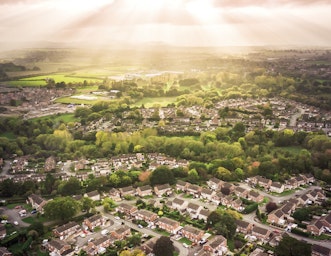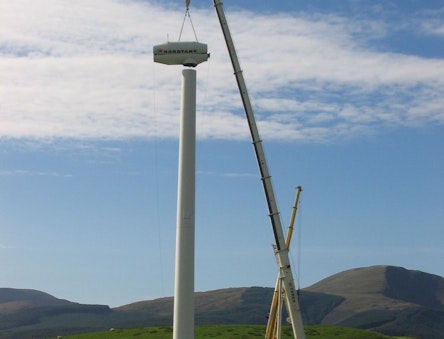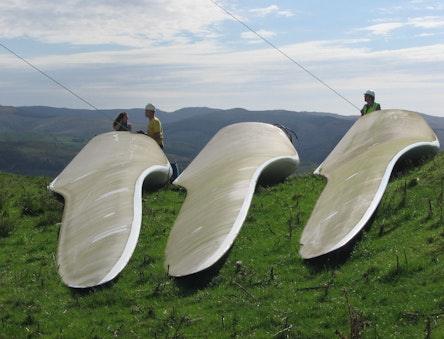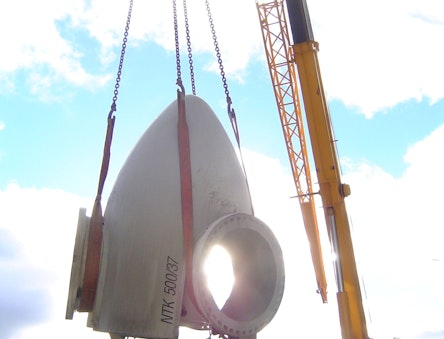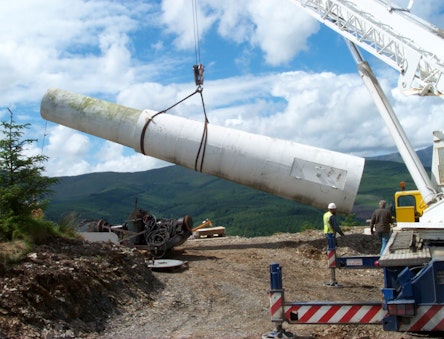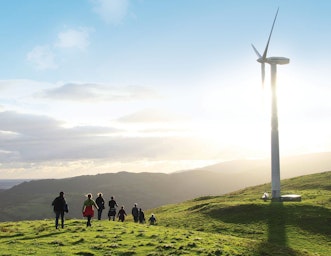
Locally owned energy can provide a wide range of benefits, from reducing emissions to helping fund local initiatives. Paul Allen introduces a scheme local to CAT, Bro Dyfi Community Renewables, which shows what’s possible when communities come together to create change.
Community-owned renewable energy schemes can bring people together and give them a way to turn their concern for each other and the natural world into action. They can get people talking about energy, at home, at work and at school, and can build wider support for scaling up solutions to the climate and biodiversity emergency. They can even create jobs and raise an income for local people and community groups.
It’s inspiring to see communities exploring the potential of locally owned renewables in villages, towns and cities across the UK and globally.
One project CAT has been closely involved in from the start is the Bro Dyfi Community Renewables (BDCR) initiative – and, for me personally, it’s a fantastic real-life story of what communities can do when they decide to come together to create change.
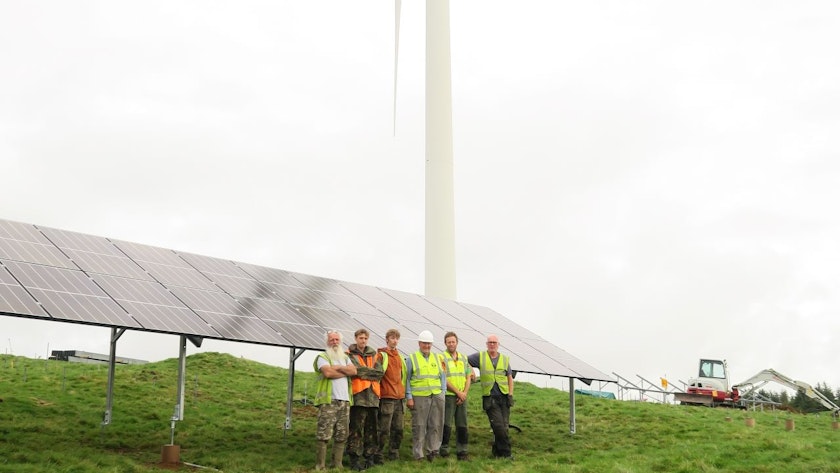
Bro Dyfi Community Renewables
Established in 2001, BDCR was one of the UK’s first community renewable energy cooperatives. It was formed by a group of people living in and around CAT’s local town of Machynlleth, who came together to explore ways of responding to the climate crisis. This group of passionate environmentalists approached CAT with a proposal to install a turbine on the land above our site, which would meet most of our electricity demand, with surplus going to the local grid.
Aligning perfectly with our mission to empower people to act in the climate crisis, CAT supplied technical expertise to help develop the project, and agreed to become BDCR’s major customer. This partnership helped BDCR to make the financial case for the turbine, whilst increasing CAT’s renewable electricity supply and allowing us to demonstrate to visitors and learners how communities could come together to take positive action.
The first turbine
As the project vision came to life, there was a need to raise the investment capital, so the group promoted a share scheme through word of mouth, local press and leaflets in local vegetable boxes.
The offer to buy shares in the scheme was a success, with 55 shareholders secured. Three members were given management responsibilities and rewarded with payment and shares for their time and skills. The group also successfully secured grant funding to help pay for the turbine and to set up a community energy fund to invest in reducing carbon emissions and addressing fuel poverty in the local area.
After reviewing a range of options, the partnership decided to source a second-hand 75kW Vestas V17 turbine from Denmark. One of the members of the local group was an engineer with experience of wind turbines, so led the construction team, advising on essential refurbishments of the V17 before it was shipped to Wales.
After an inspiring community-wide effort, the V17 turbine was up and running in 2003. The turbine supplied CAT with electricity until 2008 – when we were expanding our education provision and needed a bigger grid connection – and it continues to supply electricity to the local grid to this day.
But BDCR didn’t stop there – they really wanted to scale up the innovation in community ownership.
More power to the people
BDCR’s second wind turbine, financed by another share offer, was a second-hand Nordtank 500kW turbine, affectionately known as ‘Nora’. After overcoming a range of challenges, Nora started generating local power in December 2010, and has been performing better than expected, thanks to the wonderful windy weather of Mid Wales!
BDCR now has around 200 shareholders, more than half of whom are local, receiving an annual interest return on their investment.
Part of the revenue generated from both of these wind turbines goes into a community energy fund that gives grants to local organisations for projects that reduce carbon emissions. These have included fitting solar panels on the roof of a school, putting low-energy light bulbs in village halls, and helping older people in cold homes with their fuel bills. Profits are also supporting local initiatives such as a new community hub, a food surplus distribution centre, and mental health projects.
To further innovate, and build on the work completed so far, BDCR is now completing the installation of an almost 300kW solar photovoltaic (PV) array alongside the Nordtank wind turbine.
This will substantially increase BDCR’s generation capacity to around 875kW, and make an even greater contribution to renewable generation in the local area. We are making plans for some of the output to supply electricity directly to CAT via a private wire arrangement. This is a fantastic opportunity – investing in a private wire now should hugely reduce CAT’s future energy costs. But initially, we’ll need your support to make this happen.
A lasting partnership
Over the last two decades the partnership between CAT and BDCR has continued and developed.
For CAT, the new solar array offers a reliable local renewable energy supply to complement our on-site systems, and means that money spent on our electricity will go back into the local community. For BDCR, CAT will provide a regular, reliable customer, which can help to kick-start investment in the new solar scheme.
Students and visiting groups regularly take a walking tour up to the BDCR site, getting an up-close view of wind power in action, and the new solar array will add additional learning opportunities. BDCR members also regularly teach and present at CAT, about both the benefits of community energy and the technical aspects of wind and solar. This provides us with an invaluable local showcase of a community taking power into its own hands.

Learning from experience
BDCR Chair Rod Edwards and Committee Member Tim Brewer share some key learnings from 25 years spent supporting community energy in the Dyfi Valley.
What are you most proud of in terms of the impact BDCR has had within the community?
Tim: “Most of our shareholders live within the Dyfi Valley and therefore the annual share interest payments we have made to them over the last 25 years have remained within the local community. More recently, with the increase in electricity prices, we have been able to spend a proportion of this extra revenue (around £60k) in the community, helping to fund various local projects.”
Rod: “Particularly in the early days, the project raised awareness in the area of the issue of where energy comes from, and how renewable energy can contribute to the abatement of carbon emissions.”
What were the main challenges, and how were these overcome?
Tim: “There have been many challenges over the last 25 years – both technical and organisational. From an organisational point of view, maintaining the cohesion and enthusiasm of the management committee (all of whom volunteer their time) has proved difficult at times.
“Technically there have been challenges with some of our projects. For example, due to ground conditions, the solar project required a different approach to traditional construction methods for ground-mounted PV, without the use of ‘mass concrete’.”
Rod: “Having experienced engineers within the core team has certainly helped with these types of challenges! The legal, financial and planning challenges should not be underestimated either. There are a number of different legal structures for cooperative enterprises, arranging a share offer can have challenges, and planning can be a protracted process. Using the help of specialised professional experts in these areas may well be worth the cost.
“It’s also important to consider the time and energy needed for the ongoing running of the project. Where possible, we would advise that some of the generation income should be used to employ someone locally to support this side of things.”
Do you have any key pieces of advice for anyone thinking of setting up a new community renewables scheme?
Tim: “Canvass your local community thoroughly, mainly to ascertain what their appetite is and what they would like to achieve. There’s no point putting up a wind turbine if there is no support for one in the community.
“Make best use of members’ skills. Chartered civil, electrical or mechanical engineers are good people to have on board, but people who just have enthusiasm are equally useful.
“Keep your project costs as low as possible so that you can start to see the community benefits relatively quickly – there’s no point borrowing millions of pounds and taking 30 years to pay it back!”
Rod and Tim are both renewable energy engineers. As well as working with BDCR and other local organisations, they are both regular guest tutors at CAT, giving presentations, workshops and tours to students and visiting groups.
Inspired to get involved with community energy?
Find out more at the BDCR website and visit CAT’s Zero Carbon Britain online resource hub for further information and advice. You’ll find links to community energy support organisations as well as guides, case studies and courses from a range of experts, helping you take action today.
About the author
Paul is CAT’s Zero Carbon Britain Knowledge and Outreach Coordinator. He has been involved with our research into zero carbon scenarios since the beginning, coordinating the development of research reports and liaising directly with government, industry, NGOs and the arts to share findings.
- Climate Change
- Energy
- News Feed
Related Topics
EMAIL SIGN UP
Keep up to date with all the latest activities, events and online resources by signing up to our emails and following us on social media. And if you'd like to get involved and support our work, we'd love to welcome you as a CAT member.
